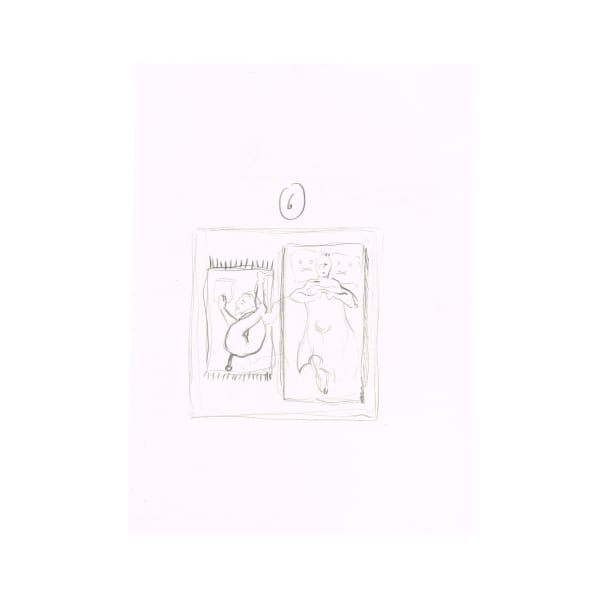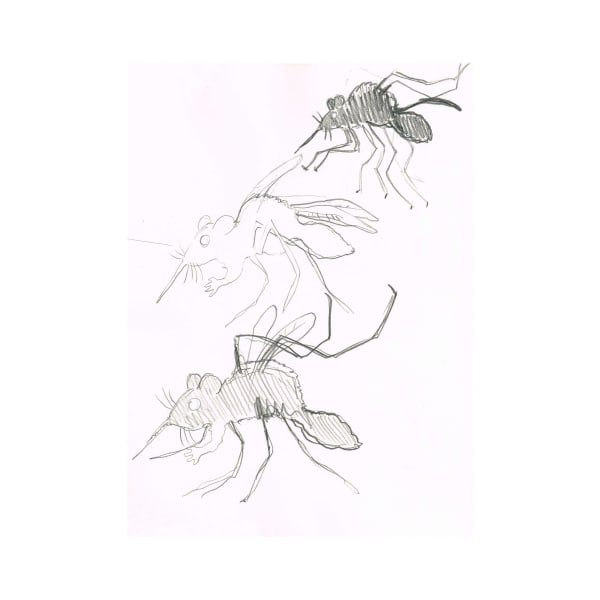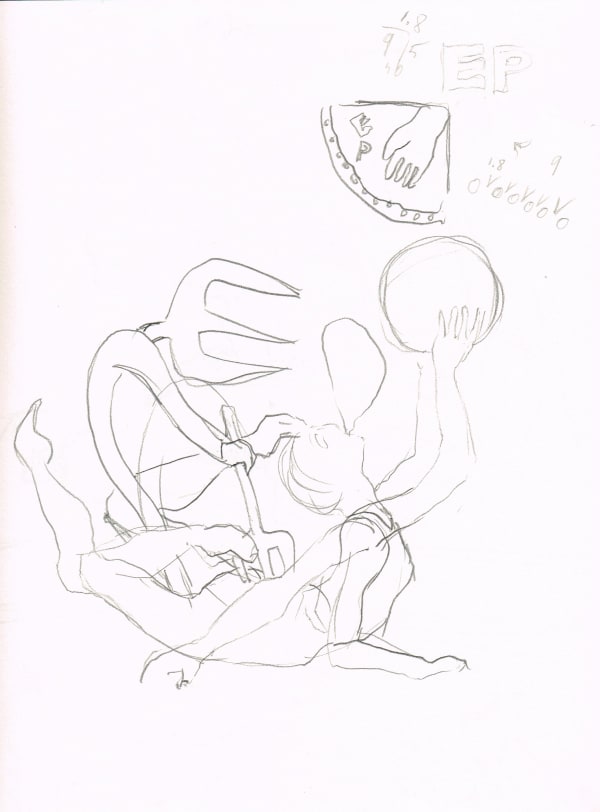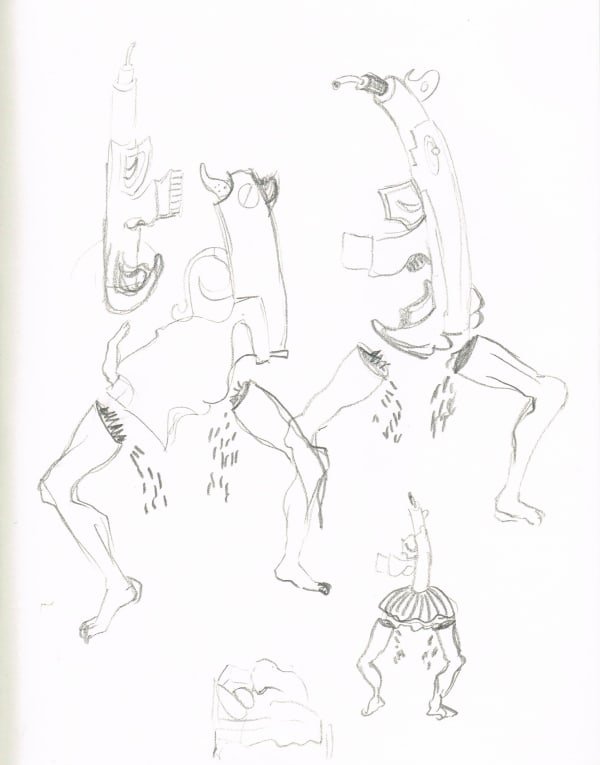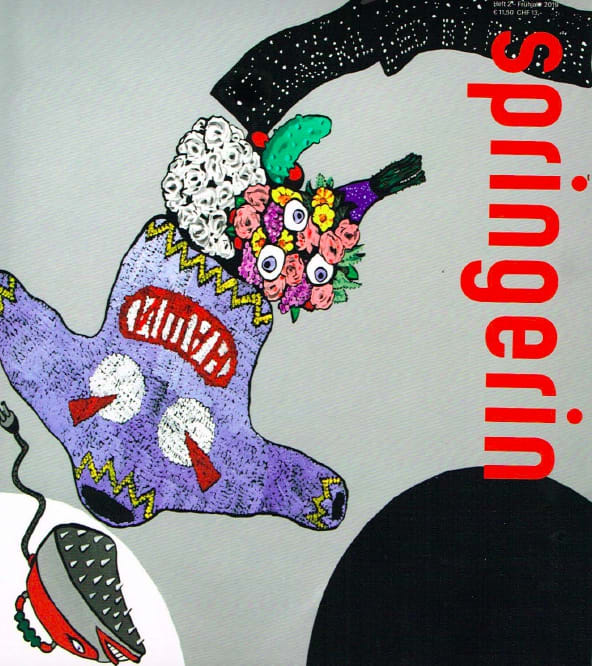Roee Rosen: The Buried Alive Cycle
For the Buried Alive Cycle, Roee Rosen created the fictive story of an ex-Soviet Russian artist collective circled around the poet and artist Maxim Komar-Myshkin who supposedly emigrated to Tel Aviv in the early 2000s. Not being included by the local Israeli art scene, the fictive group who named themselves the Buried Alive stayed isolated and alienated. As their name suggests, the group considered themselves as "cultural zombies," still living in their Russian past. "The Buried Alive Group's ideology is avant-garde in reverse, looking backwards not forwards, and aspiring to isolation," as Roee Rosen puts it.
Besides the videos of the Buried Alive Cycle, Komar-Myshkin apparently left behind an illustrated album in the style of a children's tale, titled Vladimir's Night, evoking a fiction in which Vladimir Putin's avatar appears as the central figure of Komar-Myshkin's paranoid delirium about power and torture. The book ends with Vladimir being tortured and killed by animated objects. The album, published by Sternberg Press (2014) was recently shown at the Centre Pompidou, Paris.
The Vladimir drawings, 62 delicate preparatory drawings for this album, some of them with annotations for the final execution of the images, will be shown for the first time at Erna Hecey Gallery. In the paintings from the series Astrological Paranoia which will also be part of the exhibition, paranoia shows in the form of star constellations, with satirical though poetic images and words showing up in the sky. The exhibition closes with the newest video work, The Dust Channel (2016) which premiered at documenta 14.
Set in the home of a bourgeois Israeli family, the Operetta (with Russian libretto supposedly written by Komar- Myshkin) follows its protagonists' life shaped by paranoia of dust, dirt, or any alien presence in their house which manifests in their obsession and devotion to all sorts of home-cleaning appliances. In subtle references, by combining footage of news and reports about Holot, which is the Hebrew word for sand, but also the name of a detention center set up by the Israeli State in the Negev desert where political refugees are held, with a sung glorification and objectification of the Dyson vacuum cleaner, a high end device produced in Britain - Rosen uses the Mysophobia of the protagonists as a symbol for xenophobia.
The exhibition at Erna Hecey Luxembourg will feature all six films of the Buried Alive Cycle, produced by the Buried Alive group between 2004-2010 as well as The Dust Channel and the video loop Screensaver (2016), in which six cleaning robots are trapped on a sky-like carpet, creating a situation where the logic of their programming paradoxically creates a movement akin to that of screen-savers algorithms.
-

Exhibition view Roee Rosen, The Buried Alive Cycle, 2019, Erna Hecey Gallery, Luxembourg
-

Exhibition view Roee Rosen, The Buried Alive Cycle, 2019, Erna Hecey Gallery, Luxembourg
-

Exhibition view Roee Rosen, The Buried Alive Cycle, 2019, Erna Hecey Gallery, Luxembourg
-

Exhibition view Roee Rosen, The Buried Alive Cycle, 2019, Erna Hecey Gallery, Luxembourg
-

Exhibition view Roee Rosen, The Buried Alive Cycle, 2019, Erna Hecey Gallery, Luxembourg
-

Exhibition view Roee Rosen, The Buried Alive Cycle, 2019, Erna Hecey Gallery, Luxembourg
-

Exhibition view Roee Rosen, The Buried Alive Cycle, 2019, Erna Hecey Gallery, Luxembourg
-

Exhibition view Roee Rosen, The Buried Alive Cycle, 2019, Erna Hecey Gallery, Luxembourg
-
 Roee Rosen, Dzerzhinsky’s Sermon on the Mount (Big Felt I), 2017
Roee Rosen, Dzerzhinsky’s Sermon on the Mount (Big Felt I), 2017 -
 Roee Rosen, Astrological Paranoia #11, A Stars' Star, 2017
Roee Rosen, Astrological Paranoia #11, A Stars' Star, 2017 -
 Roee Rosen, Astrological Paranoia #14, Dinner at Silvio's, 2014
Roee Rosen, Astrological Paranoia #14, Dinner at Silvio's, 2014 -
 Roee Rosen, Astrological Paranoia #17, Beria Kills Babel, 2014
Roee Rosen, Astrological Paranoia #17, Beria Kills Babel, 2014
















